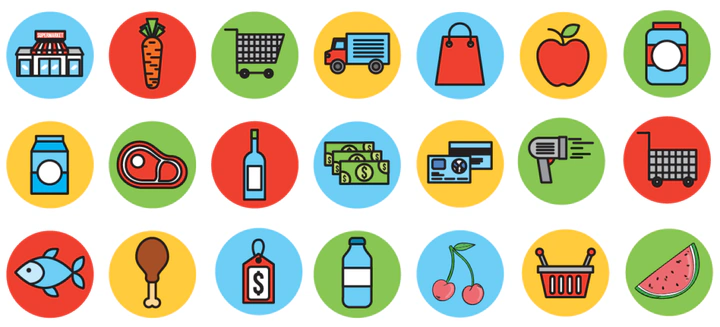Food prices in Canada

How has consumer product pricing changed in 2022?
Grades 6 - 12
According to recent headlines (e.g. this CBC article), grocery prices in Canada are soaring. Is there any correlation between this surge in food prices and the Covid-19 pandemic?
In this exercise, we investigated the monthly average retail price of common grocery store products in Canada from 2017 to 2022. We also analyzed provincial grocery price trends.
To answer our question we:
- Used monthly average retail price data (2017-2022) for selected products across the country * from Statistics Canada
- Used historical product price data (1995-2022) for Canada, also from Statistics Canada
- Created a series of line graphs
* Note: The prices for Northwest Territories, Nunavut, and Yukon were not found in the Statistics Canada dataset.
First, we plotted the prices of different products over recent years in each Canadian province. In this interactive plot (below), you can select specific products from the dropdown menu. You can also toggle the province and territory names to turn on/off the respective data graphs.
Notice that the plot for each product is “normalized,” which means that the prices are shown relative to the Canadian average. For example, the average price of two litres of apple juice in Canada was $2.80 in January 2017. We divided the price of apple juice in each month by 2.8 to rescale them. The rescaling set the price index (normalized price) for Canadian average in January 2017 to 1.0. Now, we can easily compare data points on the plots to this price index.
For instance, the apple juice price index in Alberta in June 2017 was 1.1. This means the price was 10% higher (1.1/1.0 x 100%) than the Canadian average in January 2017. We can easily calculate the actual price by multiplying the price indices by the same factor of 2.8. The actual price of apple juice in Alberta in June 2017 was $2.8 x 1.1 = $3.08.
Note that rescaling the data points does not change the shape of our plots, it just makes it easier for us to compare the different data points.
In this line graph visualization, you can see that while the price of two litres of apple juice in Alberta has increased steadily (~ 20%) since 2017, the price of oranges has increased by almost 80%. Try clicking on the province names to focus on the province of interest.